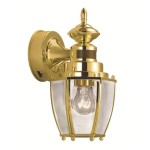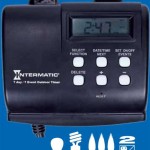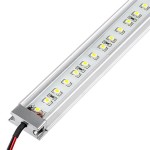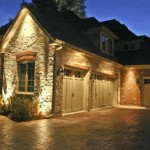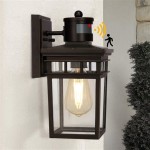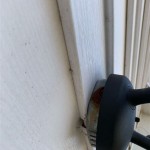Outdoor Motion Sensor Lights: Optimizing Your Settings for Security and Efficiency
Outdoor motion sensor lights are invaluable tools for enhancing security and safety around your property. They deter potential intruders, illuminate pathways, and provide convenience during nighttime activities. However, maximizing their effectiveness requires understanding and adjusting their settings to match your specific needs. This article will guide you through optimizing your outdoor motion sensor lights for both security and energy efficiency.
1. Sensitivity: Balancing Security and False Triggers
The sensitivity setting determines how easily the motion sensor detects movement. A highly sensitive setting will trigger the light for even the slightest movement, such as swaying branches or small animals. While this might deter unwanted visitors, it can also lead to frequent, unnecessary activations, which can be annoying and waste energy. Conversely, a low sensitivity setting might miss smaller movements, potentially allowing undetected access to your property.
To find the right balance, consider your surroundings. If you live in a wooded area, you might need a lower sensitivity to avoid triggering the light from wind-blown branches. In open areas, a higher sensitivity might be beneficial for detecting larger movements. Experiment with different settings, observing the trigger points during various times of the day and night.
2. Time Delay: Striking a Balance Between Security and Energy Efficiency
The time delay setting determines how long the lights remain on after detecting movement. A longer delay can be beneficial for security, providing extended illumination to deter potential intruders. However, it can also lead to longer periods of unnecessary lighting, wasting energy and possibly disturbing neighbors. A shorter delay might be suitable for illuminating walkways and driveways, while a longer delay might be preferable for areas with higher security concerns.
Consider the location of the light and the level of security required when setting the time delay. For instance, you might choose a longer delay for a light facing a back door or garage, while a shorter delay might suffice for a light illuminating a front walkway. Experiment with different time delays to find the optimal balance between security and efficiency.
3. Lighting Type and Brightness: Choosing the Right Illumination
The type and brightness of the light source can significantly impact both security and energy efficiency. Bright, white lights provide excellent illumination, deterring intruders and maximizing safety. However, they consume more energy and can be intrusive to neighbors. Warmer, amber-colored lights can also be effective for security, consuming less energy and being more subtle. LED bulbs offer a more energy-efficient option compared to traditional incandescent bulbs.
Choose the light type and brightness based on your specific needs. For instance, you might use bright white lights for high-security areas, like garage doors or backyards, while opting for warmer, amber-colored lights for illuminating pathways or decorative features. Consider using motion-activated floodlights for maximum security and bright LED bulbs for maximum energy efficiency.
4. Installation and Placement: Optimizing Coverage and Functionality
The location and angle of installation can significantly impact the effectiveness of your motion sensor lights. Incorrect placement can result in blind spots, missed movements, and reduced security. Ensure your lights are installed in areas where they can effectively illuminate potential entry points, walkways, and driveways. Install them at appropriate heights to avoid glare and optimize coverage.
Consider using multiple lights for larger areas, ensuring proper coverage and illuminating all potential entry points. Installing lights at varying heights and angles can help create overlapping coverage, reducing the likelihood of blind spots. When installing lights, take into account potential obstructions, like trees or bushes, that could block the sensor's view.
5. Maintenance and Troubleshooting: Ensuring Optimal Performance
Regular maintenance is crucial for ensuring the optimal performance of your motion sensor lights. Clean the sensor lens and housing to prevent dirt and debris from interfering with its functionality. Check the batteries or power supply regularly, replacing them as needed. If your lights are not working properly, inspect the wiring and sensor for any signs of damage.
Troubleshooting issues with your motion sensor lights can often be done yourself. Common problems include faulty sensors, malfunctioning bulbs, and wiring issues. By following the manufacturer's instructions and conducting a thorough inspection, you can usually identify and resolve the issue without needing professional assistance.

How To Alter The Settings On Your Pir Floodlight Security Light Sensor

120 Led Solar Security Light Black Spv Lights

Understanding Motion Lighting

How To Adjust Your Sensor Light Metro Electrical 24 Hour Electricians

Understanding Motion Lighting

Compre 220v 12v Detector De Movimento Infravermelho Automático Pir Sensor Led Temporizador Montagem Na Parede Ao Ar Livre 12 Volts Interruptor Luz Joom

Motion Sensor Lights Tips To Reset Detector

Eti 240 Degree Led Motion Sensor Light Outdoor White 3 Head Flood Security 1800 To 3600 Lumens Driveway Walkway 514032120 The Home Depot

Lightdot Led Security Lights Motion Sensor Light Outdoor 38w 3800lm O

How To Alter The Settings On Your Pir Floodlight Security Light Sensor
Related Posts
